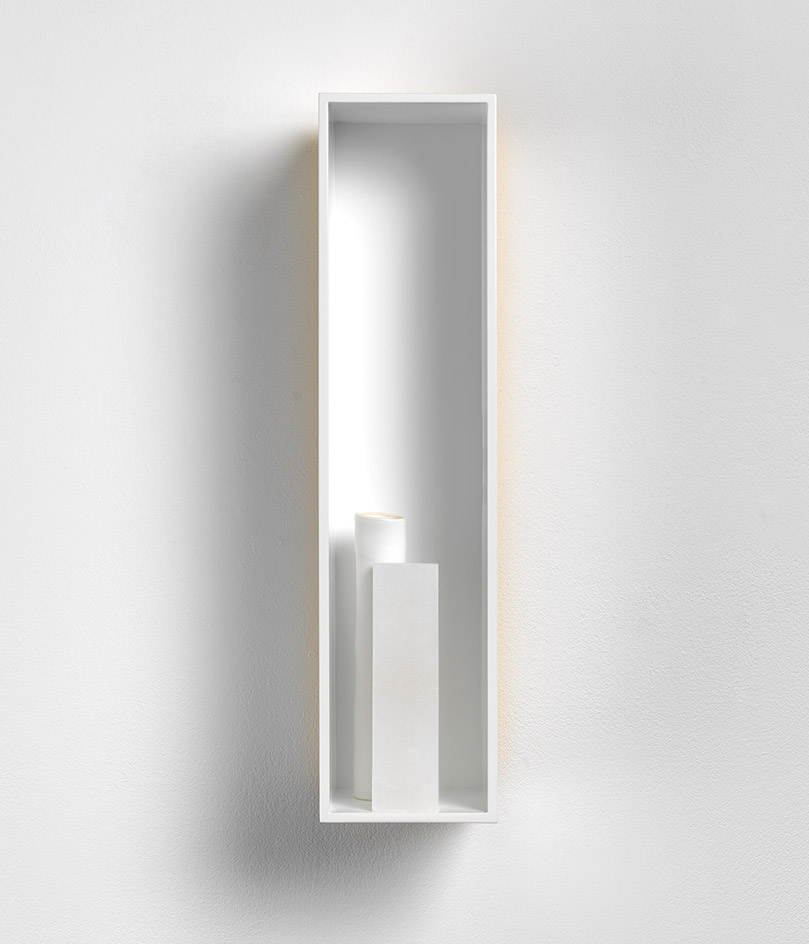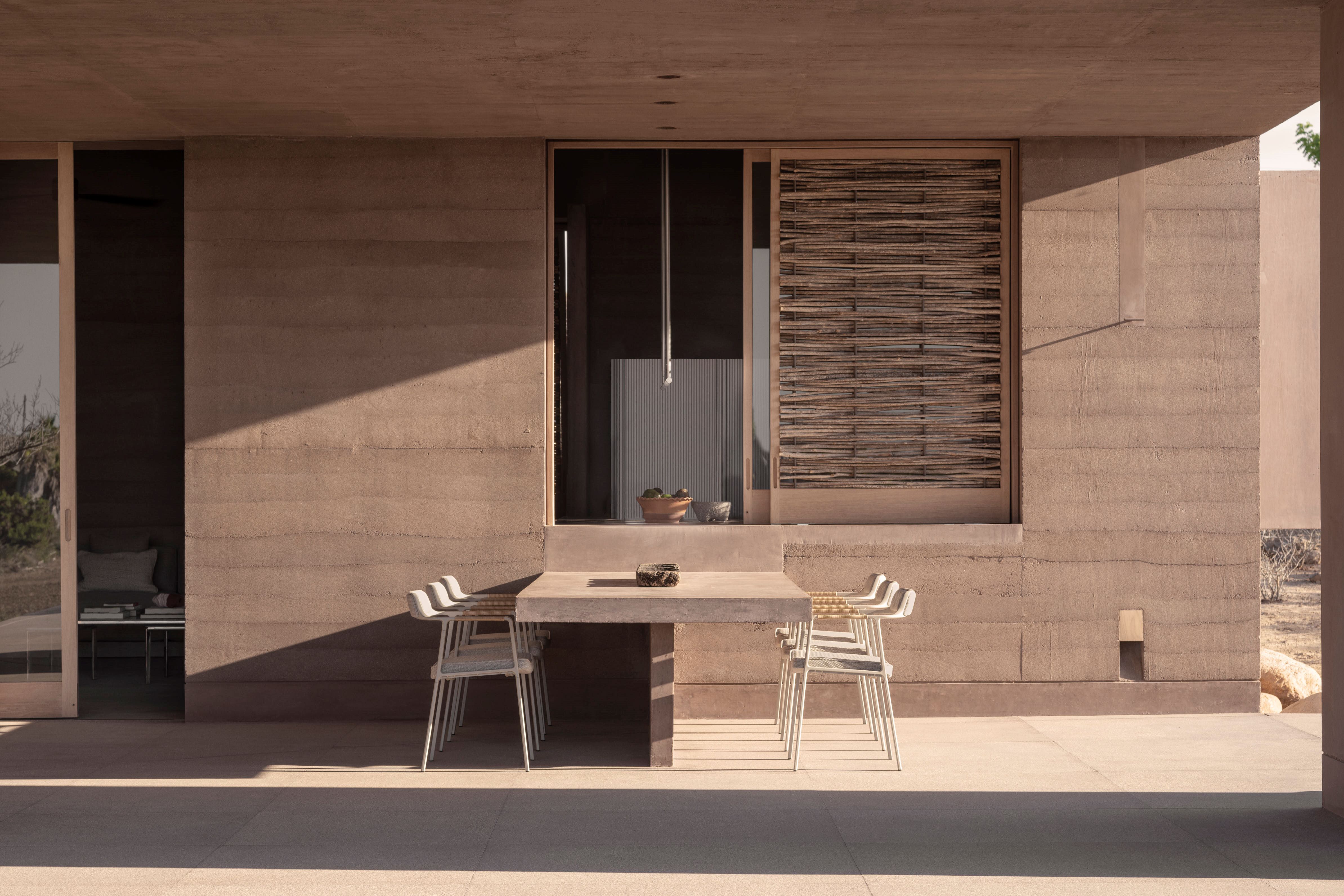Edmund de Waal to stage architectural intervention in LA modernist masterpiece

When West Hollywood’s Schindler House was conceived in 1922, it proposed a radical, Bauhausian mode of dwelling for Los Angeles – remarkable not for what it had, but for what it didn’t. It cracked convention by doing away with defined living spaces, favouring a modular format, ultimately a prototype designed for two young families to coexist seamlessly.
From 15 September, the residence – now home to the MAK Center for Art and Architecture – will once again become a new form of dwelling, this time for the work of Edmund de Waal as he stages his first architectural intervention in the US. But the British artist is no stranger to the allure of the so-called Kings Road House.
‘I’ve had a photograph of the Schindler on my wall for about 20 years,’ he told Wallpaper* in 2016 in the run up to ‘ten thousand things’, an exhibition featuring hundreds of black-glazed vessels married with lumps of raw material housed nine miles down the road in Gagosian’s Beverly Hills gallery. The show paid homage to American composer and music theorist John Cage, and a six-month residency he undertook at Schindler House in the early 1930s. (At the time, the home was ‘the focus of constant social gatherings’ in LA’s creative community, with the likes of Frank Lloyd Wright and Edward Weston drifting through.)

Schindler, 2018, by Edmund de Waal, porcelain vessel and alabaster block in a gilded aluminium vitrine
Renowned for his large-scale porcelain ‘pot’ installations arranged in clusters with a signature celadon glaze, de Waal has become a key interlocutor between Japanese and Western aesthetic traditions. The forthcoming exhibition, ‘one way or other’, will be a sensorium directly reflecting the Schindler’s integrated environment, materiality and spirit. A soundscape conceived in collaboration with composer Simon Fisher Turner will accompany an array of the artist’s most recent creations.
For the architect Rudolph Schindler, the most important question was ‘whether a house is really a house’; this meant countering ostentatious décor and soulless mass-manufacturing methods. To wit, the house was conceived in a shared vision with his then-wife, Pauline, as a striking commentary on the art of living through the use of few materials. Underappreciated in his time, the pioneer of 20th-century modernist architecture created experiential spaces that exceeded the sum of their minimal parts.
The purpose of Schindler’s space, says de Waal, was ‘to reset the conditions in which a modern family could live and experiment’. The exhibition will see de Waal tap further into the architect’s ethos, exploring the boundaries of revisionist domesticity almost a century after the pioneering house was realised.
INFORMATION
‘one way or other’ is on view at the Schindler House from 15 September – 6 January. An exhibition of works by Edmund de Waal, ‘the poems of our climate’, is on view at Gagosian San Francisco from 20 September – 3 November. For more information, visit the MAK Center for Art & Architecture website and the Gagosian website
ADDRESS
Schindler House
835 North Kings Road
West Hollywood
Los Angeles CA 90069
Receive our daily digest of inspiration, escapism and design stories from around the world direct to your inbox.
Harriet Lloyd-Smith was the Arts Editor of Wallpaper*, responsible for the art pages across digital and print, including profiles, exhibition reviews, and contemporary art collaborations. She started at Wallpaper* in 2017 and has written for leading contemporary art publications, auction houses and arts charities, and lectured on review writing and art journalism. When she’s not writing about art, she’s making her own.
-
 This Mexican architecture studio has a surprising creative process
This Mexican architecture studio has a surprising creative processThe architects at young practice Pérez Palacios Arquitectos Asociados (PPAA) often begin each design by writing out their intentions, ideas and the emotions they want the architecture to evoke
-
 The Bombardier Global 8000 flies faster and higher to make the most of your time in the air
The Bombardier Global 8000 flies faster and higher to make the most of your time in the airA wellness machine with wings: Bombardier’s new Global 8000 isn’t quite a spa in the sky, but the Canadian manufacturer reckons its flagship business jet will give your health a boost
-
 A former fisherman’s cottage in Brittany is transformed by a new timber extension
A former fisherman’s cottage in Brittany is transformed by a new timber extensionParis-based architects A-platz have woven new elements into the stone fabric of this traditional Breton cottage
-
 Sculptor Woody De Othello paints a Miami museum red for a show that ‘almost hugs you’
Sculptor Woody De Othello paints a Miami museum red for a show that ‘almost hugs you’The Miami-born, California-based artist opens his first museum exhibition in his hometown as an experiential journey through life and lifeless objects
-
 Nadia Lee Cohen distils a distant American memory into an unflinching new photo book
Nadia Lee Cohen distils a distant American memory into an unflinching new photo book‘Holy Ohio’ documents the British photographer and filmmaker’s personal journey as she reconnects with distant family and her earliest American memories
-
 Ed Ruscha’s foray into chocolate is sweet, smart and very American
Ed Ruscha’s foray into chocolate is sweet, smart and very AmericanArt and chocolate combine deliciously in ‘Made in California’, a project from the artist with andSons Chocolatiers
-
 Jamel Shabazz’s photographs are a love letter to Prospect Park
Jamel Shabazz’s photographs are a love letter to Prospect ParkIn a new book, ‘Prospect Park: Photographs of a Brooklyn Oasis, 1980 to 2025’, Jamel Shabazz discovers a warmer side of human nature
-
 The Hammer Museum in Los Angeles launches the seventh iteration of its highly anticipated artist biennial
The Hammer Museum in Los Angeles launches the seventh iteration of its highly anticipated artist biennialOne of the gallery's flagship exhibitions, Made in LA showcases the breadth and depth of the city's contemporary art scene
-
 Thomas Prior’s photography captures the uncanny fragility of American life
Thomas Prior’s photography captures the uncanny fragility of American lifeA new book unites two decades of the photographer’s piercing, uneasy work
-
 Central Park’s revitalised Delacorte Theater gears up for a new future
Central Park’s revitalised Delacorte Theater gears up for a new futureEnnead Architects helmed an ambitious renovation process that has given the New York City cultural landmark a vibrant and more accessible future
-
 Stephen Prina borrows from pop, classical and modern music: now MoMA pays tribute to his performance work
Stephen Prina borrows from pop, classical and modern music: now MoMA pays tribute to his performance work‘Stephen Prina: A Lick and a Promise’ recalls the artist, musician, and composer’s performances, and is presented throughout MoMA. Prina tells us more